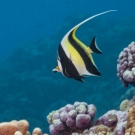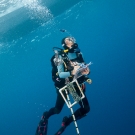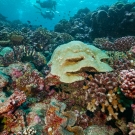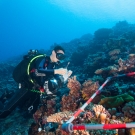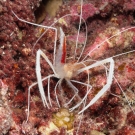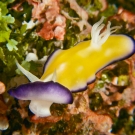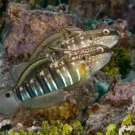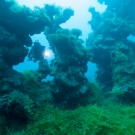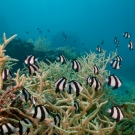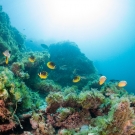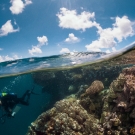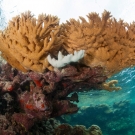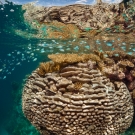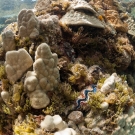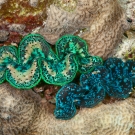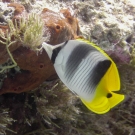Tuamotu, French Polynesia
The Khaled bin Sultan Living Oceans Foundation conducted research missions to Tuamotu Archipelago, French Polynesia in 2012 and 2013 as part of the Global Reef Expedition. Tuamotu forms the largest chain of atolls in the world, stretching an area roughly the size of Western Europe. The wide variation in geologic structures and unique biological communities provided an ideal location to study corals.
The Tuamotu Archipelago is the second-most populous island group in French Polynesia, with the local economy primarily relying on tourism, pearl farming in the lagoons, and fishing, of which most of the catch is sent to Tahiti. UNESCO established a Biosphere Reserve around the atolls of Aratika, Fakarava, Kauehi, Niau, Raraka, Taiaro, and Toau. On this research excursion we visited four of these UNESCO sites, and a total of six of the atolls in the Tuamotu Archipelago, sampling at 108 dive sites, conducting 674 benthic surveys and 450 fish surveys.
Our research focused on coral reefs surrounding the islands of Tahiti, Rangiroa, Toau, Aratika, Raraka, and Fakarava. Most of the coral reef research focused on lagoonal patch reefs, which range from 180 feet deep to just below the surface. One of the questions we were looking to answer is how lagoonal patch reefs form. We also conducted habitat mapping and coral reef assessments, assessed invertebrates that are typically targeted as food species, and studied the effects of climate change on the reef. The information we collected, and the maps and tools we developed, can be used to help protect these reefs and ensure that they continue to support local communities and attract international visitors.
